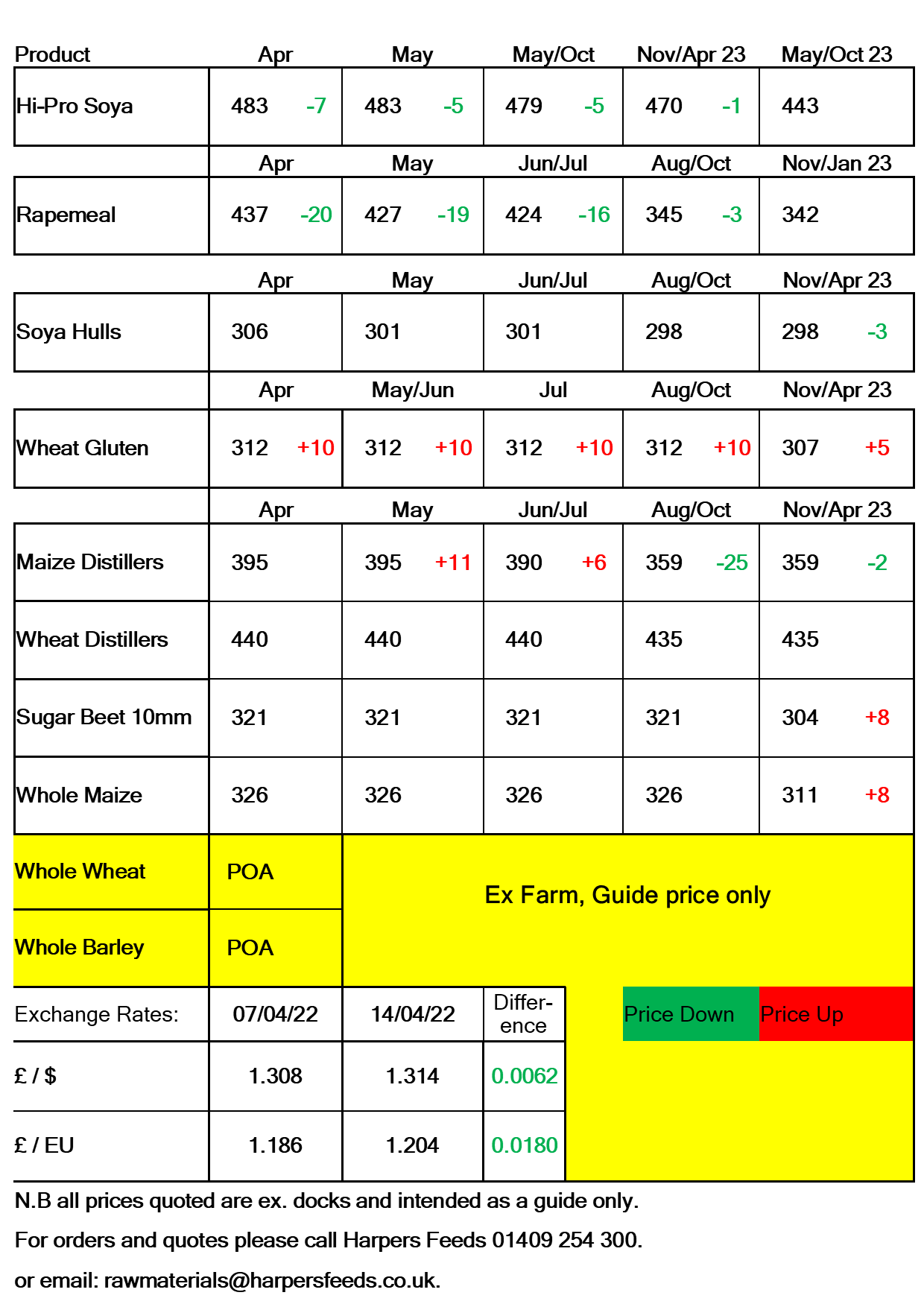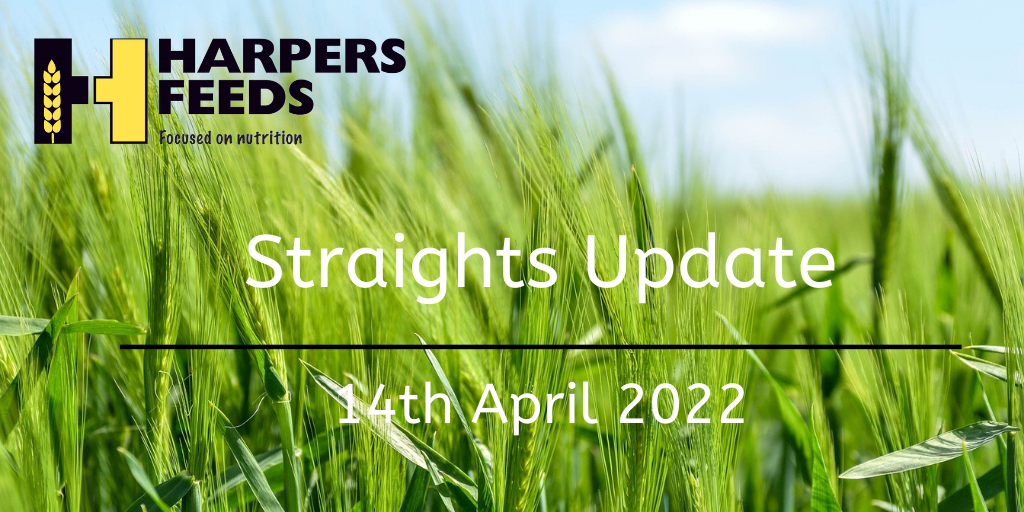Market Overview
Both old and new crop UK wheat futures closed at new contract highs again this week with May-22 futures closing at £322/tonne and Nov-22 futures closing at £293/tonne yesterday. The UK wheat market is still feeling the impact of the war in Ukraine, with large concerns still lingering over global wheat supply. The new contract highs for the wheat futures are also due to a number of other factors.
The first factor has been Egypt’s recent activity in the wheat market. Looking for replacements for Ukraine wheat, Egypt have reportedly purchased 350KT of wheat from France, Russia and Bulgaria. This substantial purchase has given support to support to EU wheat markets. The USDA have also this week cut the Ukraine grain harvest by 20% from last year due to a reduction in area planted. Dryness across the main US winter wheat producing areas continues to cause concern, with very little rainfall forecast.
This has offset news that domestically, wheat area is expected to be higher in 2022. The AHDB Arable Crop Report showed that by the end of March, 81% of the crop that was in the ground was in good/excellent condition. It is worth noting however that we are still a long way off harvest and any adverse weather or increase to input costs could still have an impact on total output. Barley continues to follow wheat market movements and demand remains tight.
Friday’s USDA WASDE report forecast US soybean stocks down to 7.1MT from 7.8MT. Reduced US ending stocks are forecasted due to US exports plugging the gap created by reduced soybean exports from Brazil and Paraguay. The USDA also cut Brazil soybean production by 2.0MT to 125MT due to ongoing drought conditions. Other private forecasts had cut production even further.
The rapeseed supply and demand balance looks tight this season, which continues to support prices. Looking at next season, a reduced area of Ukraine sunflower planting is anticipated which could see rape oil demand increase longer term.
With demand for Ukraine maize switching to other exporting countries, supply will remain tight until the Brazilian Safrinha crop arrives in the summer.







